As an eCommerce business, having an understanding of what social commerce is and how it can benefit your brand will allow you to connect with potential shoppers where they’re most present — social media.
At its core, social commerce is where eCommerce and social media meet. It’s the process in which brands sell their products on social media platforms such as Facebook, Instagram, Pinterest, and even TikTok. And with over 4.8 billion people using social media, according to Statista, if you’re not creating a path to purchase on social media, you’re missing out on an opportunity to make your customers’ shopping experience that much more convenient and seamless.
3 reasons why social commerce is important
eCommerce and social media have continued to evolve year over year, and as a result, online brands are starting to capture their customers’ attention on social media. In fact, by 2025, social commerce is expected to grow in value as much as $1.2 trillion.
Here are three reasons why social commerce is important and how it can help your brand:
1. It creates a seamless mobile shopping experience and path to purchase
With consumers spending an average of almost five hours a day on their mobile devices — and nearly 150 minutes on social media — social commerce makes it that much easier for shoppers to make a purchase.
A new or returning customer could simply scroll through their favorite social media app, see an item that they like, and purchase it straight from an app with ease. And if you’ve enabled checkout through the app, your customers won’t be redirected to your brand’s site. Instead, shoppers can discover and purchase products all in one app.
2. It allows you to reach new and returning customers
Looking to capture your customers’ attention and gain new followers? You can engage new and returning customers through social commerce. For instance, by creating an Instagram shop, you can prompt potential customers to check out your brand and increase product discovery for a whole new audience at the same time.
And by posting your products with shopping tags that name the products and drive shoppers directly to the product page within the app, you can keep your current customers engaged while also making their path to purchase that much simpler.
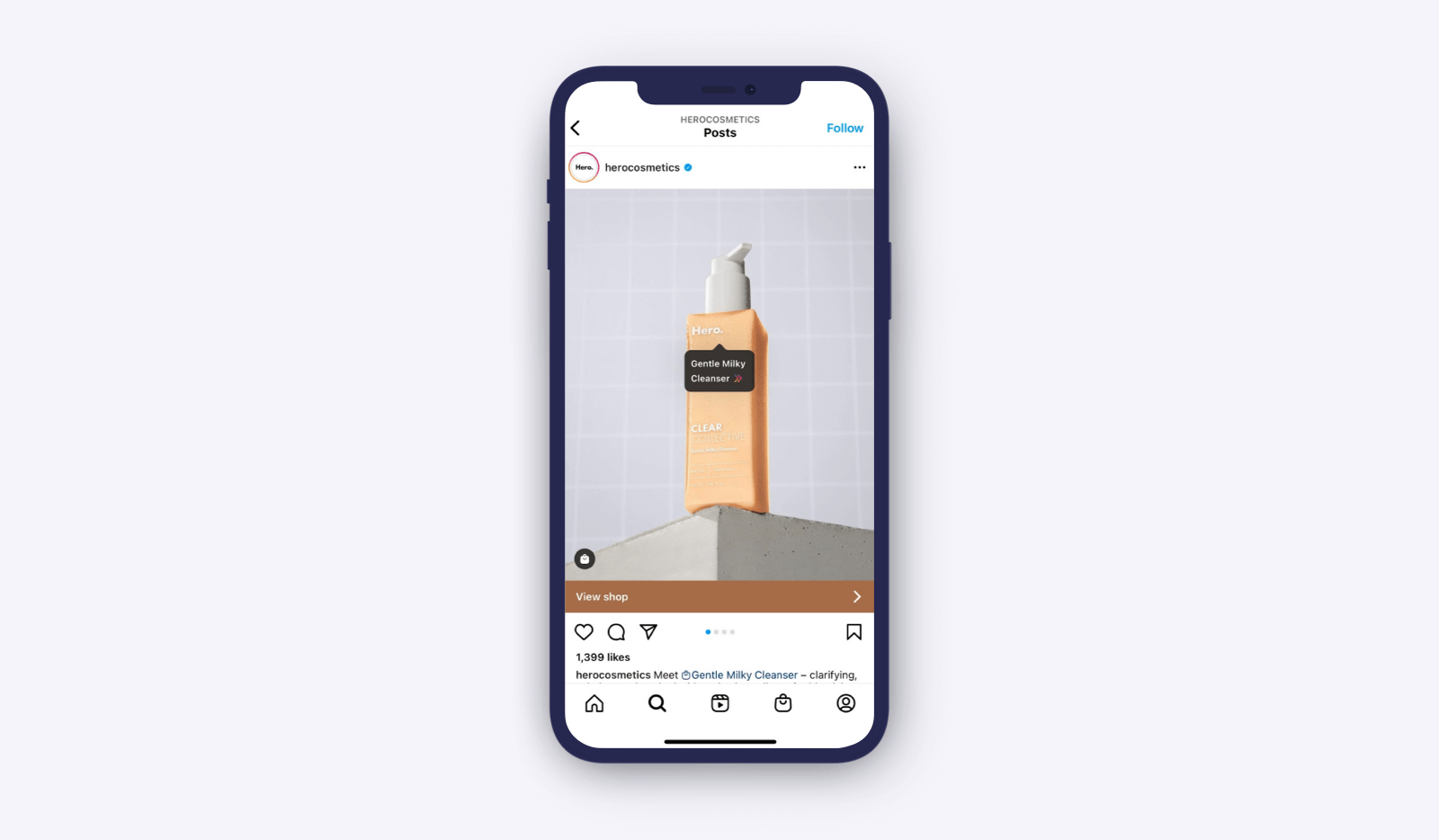
3. It provides a platform to display more social proof
Social proof, such as reviews and customer photos, influences purchase decisions. According to our recent survey, when 52% of shoppers see positive reviews for a product on social media, they’ve very likely to purchase the item. So after you collect user-generated content (UGC) — whether it be reviews or photos — share it in your shop to help drive purchases.
This social proof will allow shoppers to determine if the sneakers they’re looking at will hold up in the rain and/or if they would pair nicely with a dress. When shoppers see UGC shared on your brand’s social media, they’ll be more likely to make a purchase.
How does social commerce work?
Social commerce may work differently channel to channel, but typically, if you want to sell your products via social media, you will need to do the following:
- Create a shop: This is the first step to selling your products on social media. Setting up a shop will allow you to display your products in a way that is easy to navigate to.
- Upload your products: Similar to how you would set up product pages on your site, include all details about your products — images, prices, color options, sizes, etc.
- Enable checkout: Depending on the channel, you may want to enable checkout so that customers can complete their purchase directly from the app. If checkout is not enabled, customers will be redirected to your website to complete the checkout process.
- Push shoppable content: Get the word out about your shop and products by showcasing them in your posts with shopping tags.
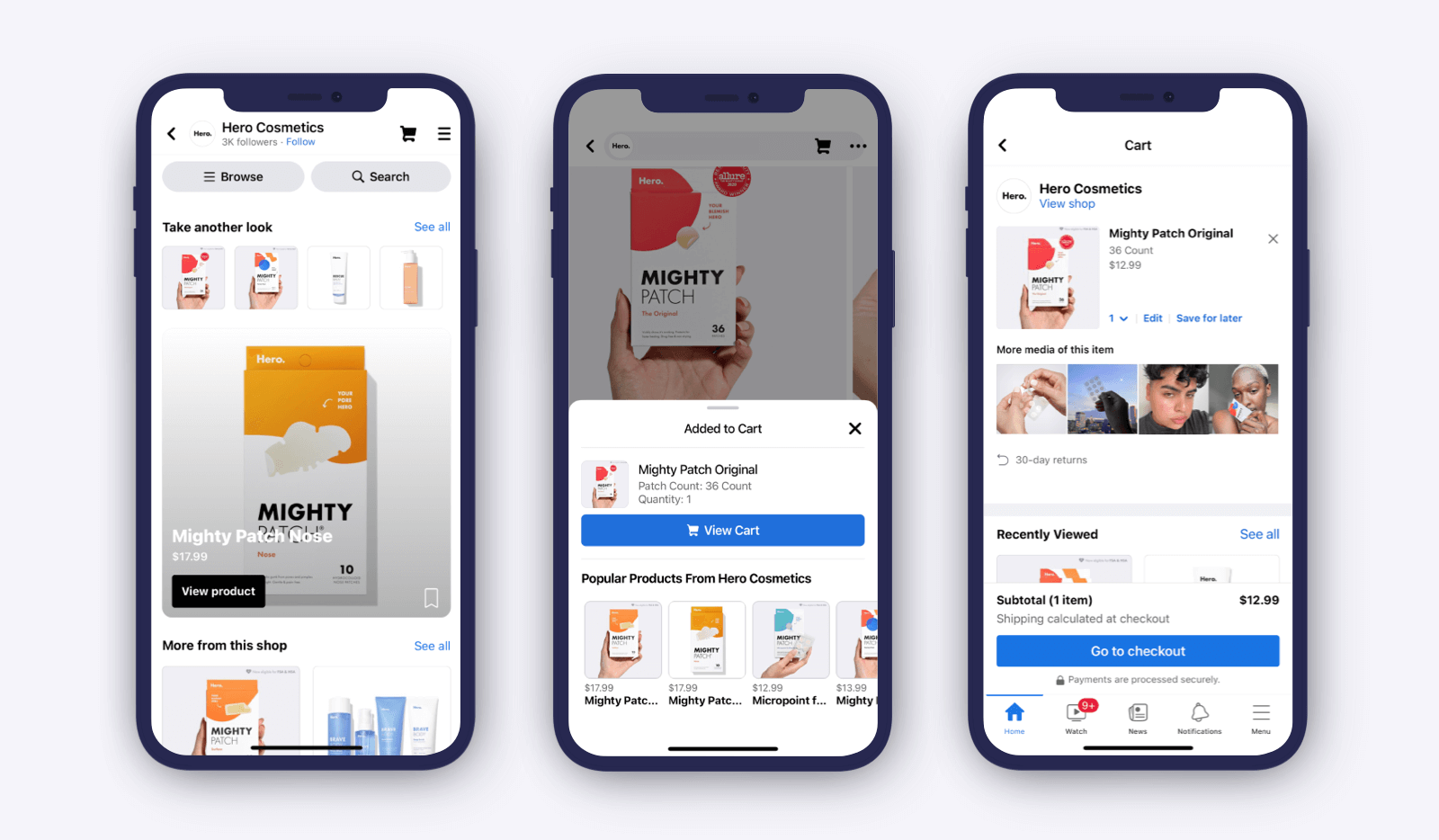
With your shop set up and content sent to your customers’ feeds, you’ll be able to create a more seamless shopping experience.
Social channels to consider for your brand
Deciding which platform to take your social commerce strategy to may seem daunting at first, but we’re here to make the choice easy. Here are a few channels to consider:
Facebook and Instagram
With more than 300 million people visiting shops on Facebook and Instagram, your brand can easily create a seamless path to purchase for new and returning customers. And when you leverage an eCommerce partner like Yotpo, you can take your shop to the next level by displaying the reviews from your site directly to your shop. One eCommerce brand that has seen success with Shops and syndicating their reviews to Facebook is Hero Cosmetics.
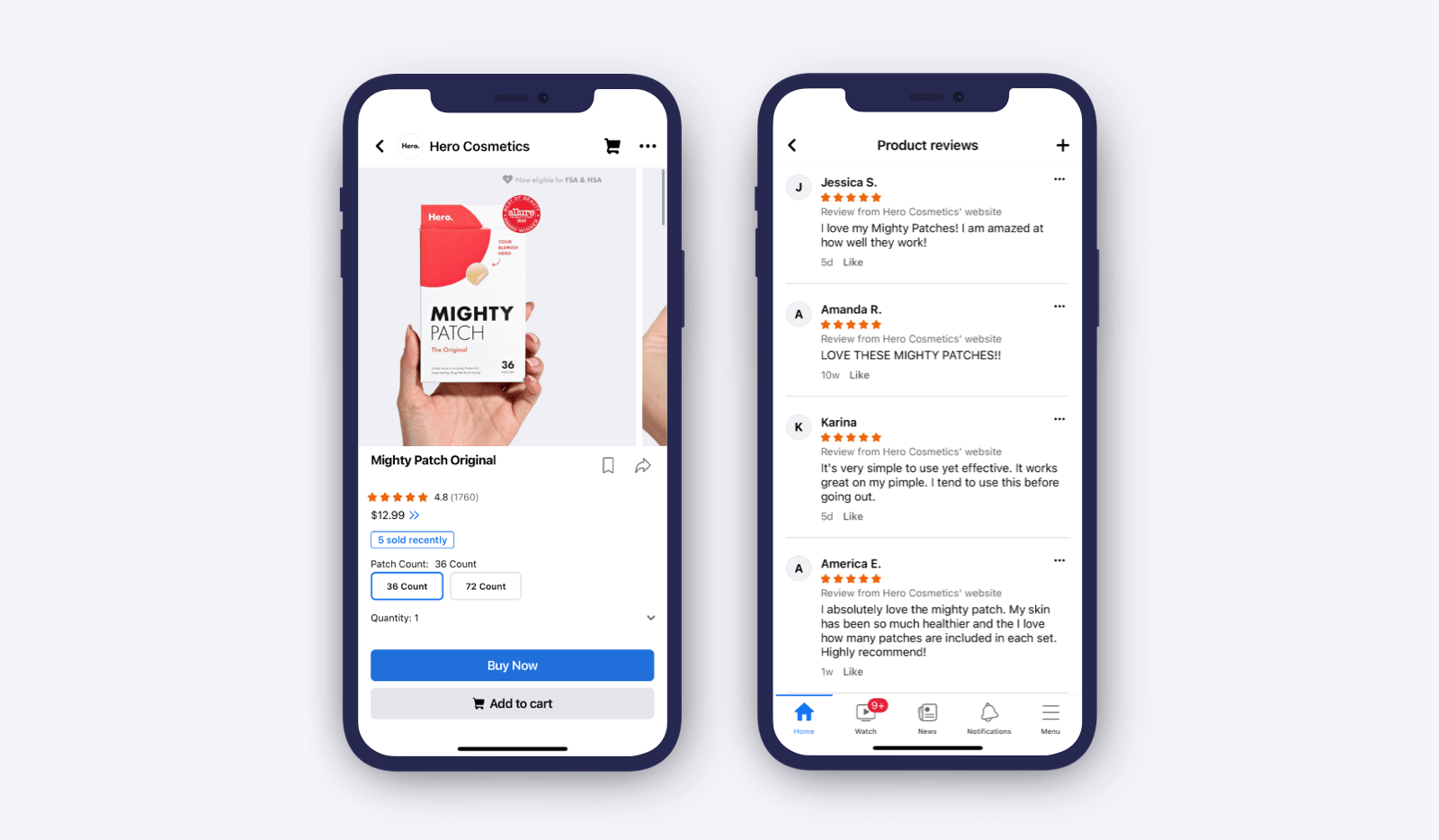
And with the checkout process built into the app, there’s less friction along the path to purchase for the customer. By opening up a shop on Facebook and/or Instagram, and partnering with Yotpo for syndications, brands will also receive a weekly report to keep track of which reviews are properly syndicated.
TikTok
On the other hand, TikTok Shop can provide a lot of exposure for a brand. And it can keep your shoppers engaged by driving social proof — shoppers can see an influencer talking about a product on the shop, purchase the item, and then keep scrolling. As noted in The Future of eCommerce: 2022 Predictions, because of this TikTok influencer strategy, about half of TikTok users have made a purchase as a result of seeing social proof on their feed.
And now, brands can drive social proof even further via Yotpo’s integration with TikTok Shop, which allows them to seamlessly syndicate their reviews to the app.
Another channel to consider for your social commerce strategy is Pinterest. With 433 million active worldwide users on a monthly basis, and the site’s unique browsing experience impacting product discovery, Pinterest proves to be another social media platform with a lot of benefits.
Plus, Yotpo’s integration with Pinterest makes it easy for brands to push UGC in regular, product, or buyable pins — allowing shoppers to browse and click to purchase.
And if you’re still looking for new ways to engage your shoppers and boost product discovery for potential new customers, Twitter is another option. Leverage our Twitter integration to increase buyer trust by pushing UGC directly to your feed.
Snapchat
If you want to increase customer engagement even further, Snapchat’s augmented reality (AR) shopping features could be a great tool to use. With the goal of turning passive shoppers into active ones, Snapchat gives brands the opportunity to curate branded AR filters where they can link to specific product catalogs.
With consumers spending so much time on their mobile devices and on social media, the chances of new shoppers discovering your brand on social media are very high. Our survey also revealed that approximately 80% of consumers prefer to read five or more reviews before making a purchase from a brand they’re unfamiliar with. And if a product has no reviews at all, 30% of shoppers stated that it would deter them from purchasing the item.
Because of this, no matter which social channel you choose for your social commerce journey, ensure that you have as much social proof as possible.
The value of social commerce
No matter the size of your business, the value of social commerce cannot be understated. Creating a path to purchase for your customers via eCommerce and social media will allow you to meet them where they’re most present and most active. It will also give you a platform to engage new potential shoppers by increasing product discovery.
With the right tools and a trusted tech partner, your brand will flourish in the social commerce space.



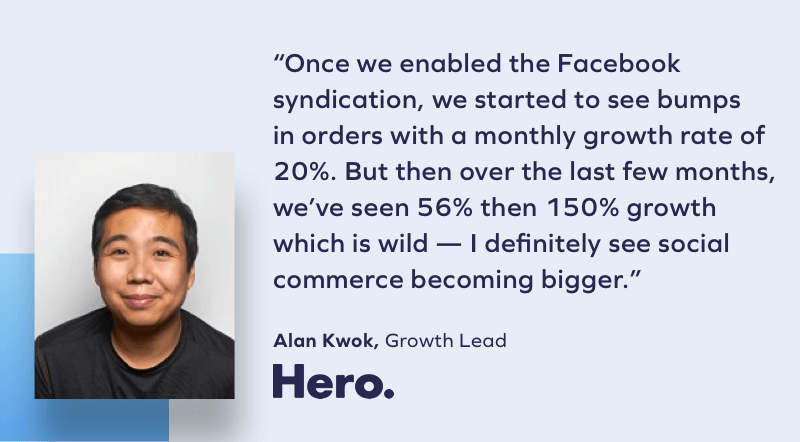



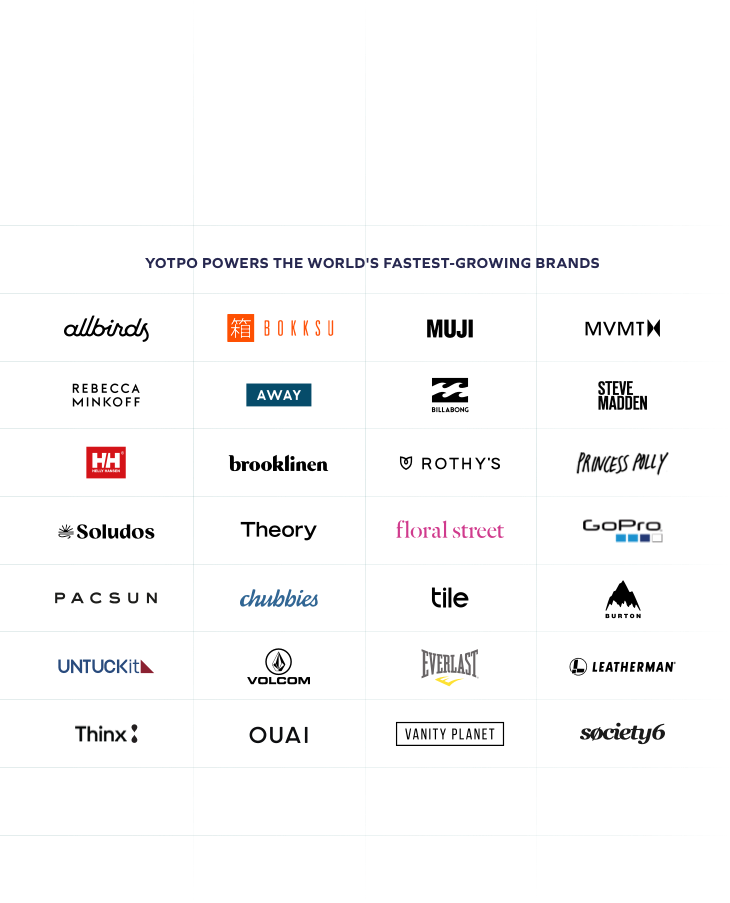







 Join a free demo, personalized to fit your needs
Join a free demo, personalized to fit your needs